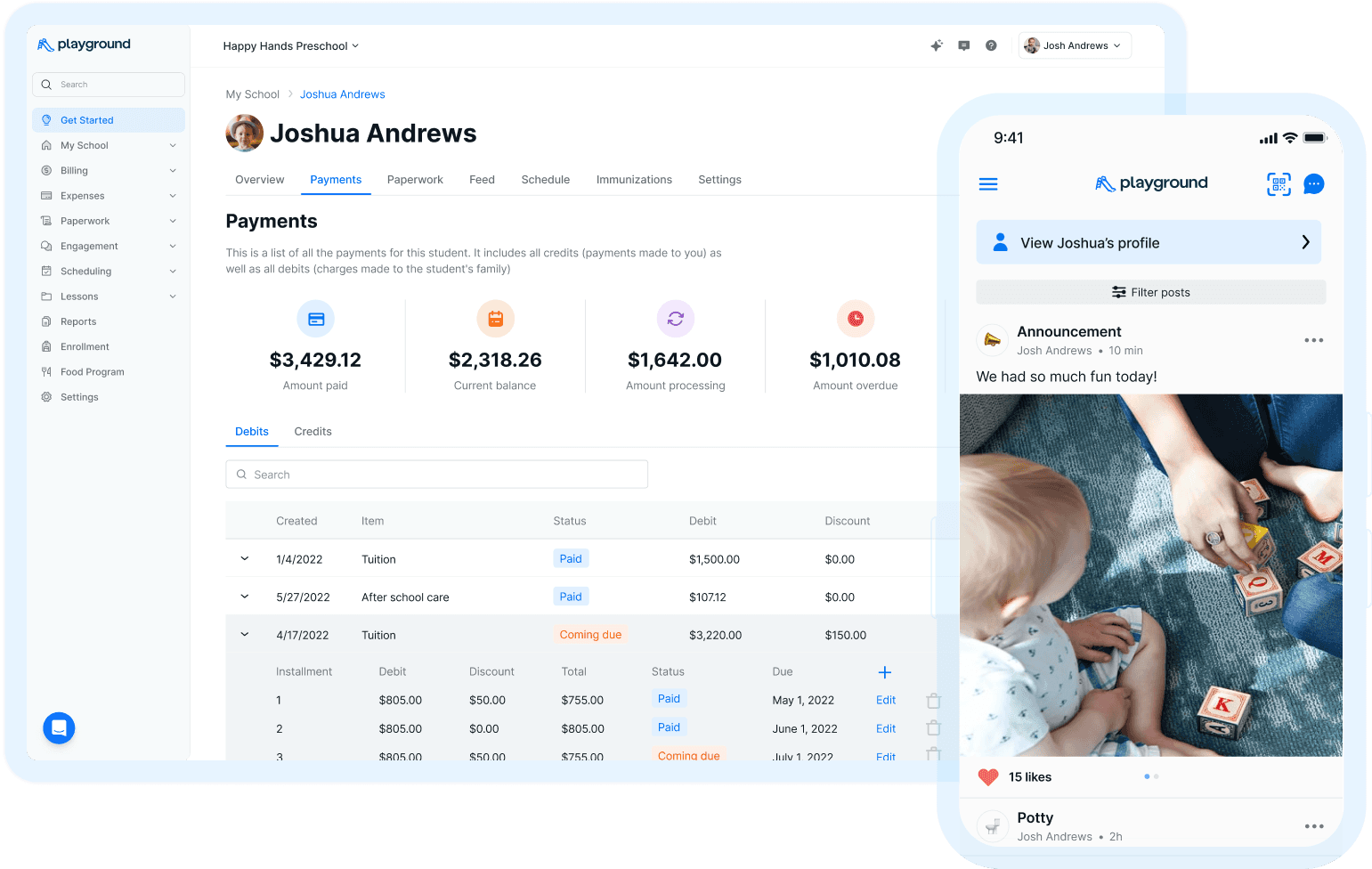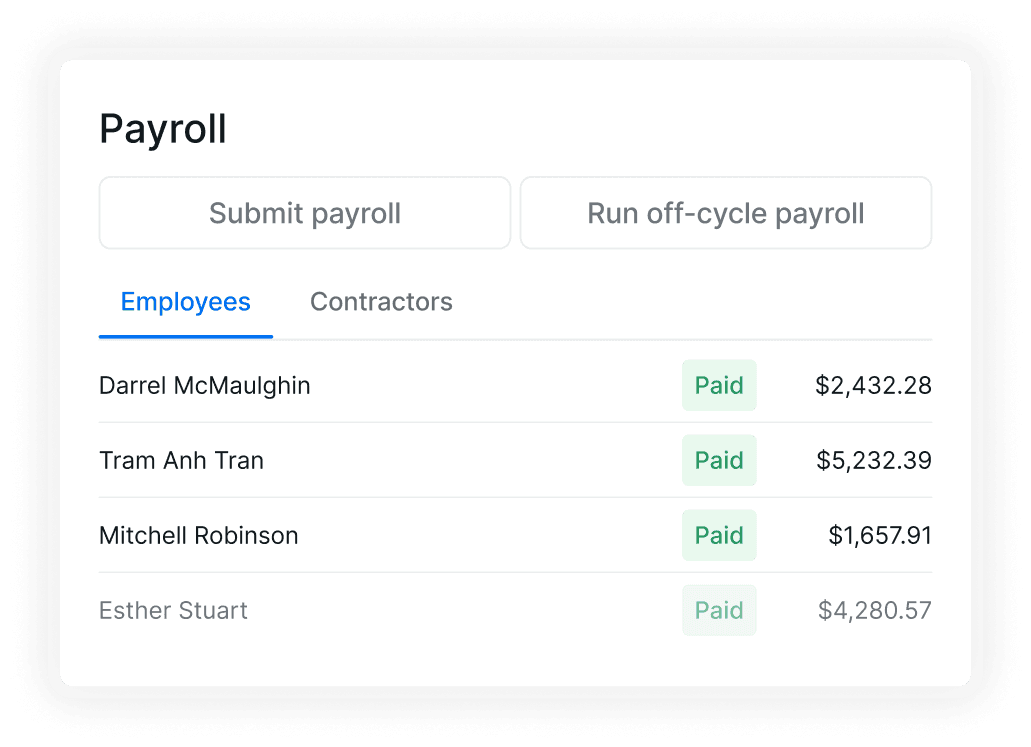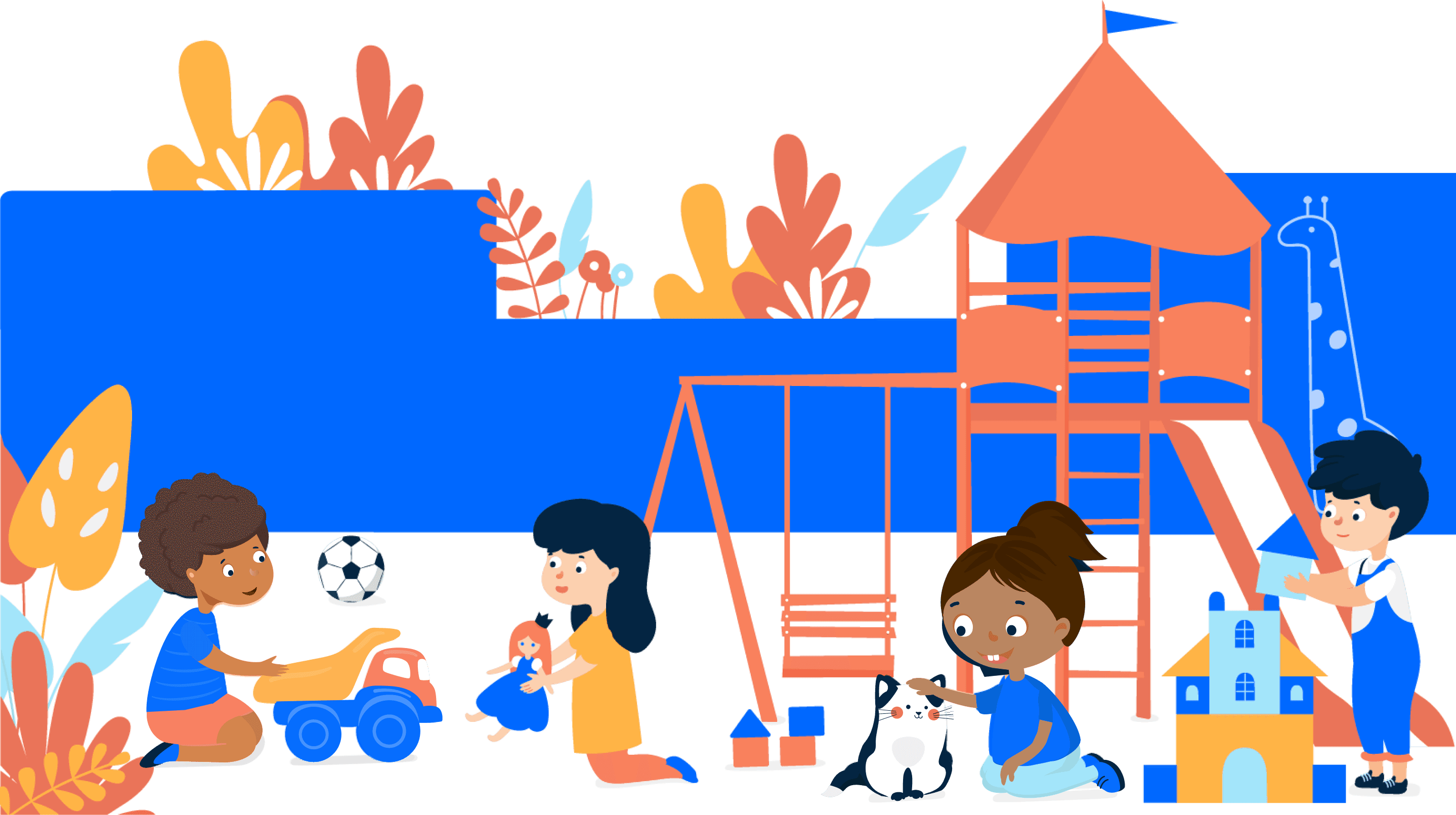Choosing Quality Child Care During a Pandemic and Beyond


Tamar Andrews

Make your families & teachers happier
All-in-one child care management platform with billing, attendance, registration, communication, payroll, and more!
5.0 Rating

Make your families & teachers happier
All-in-one child care management platform with billing, attendance, registration, communication, payroll, and more!
5.0 Rating

Make your families & teachers happier
All-in-one child care management platform with billing, attendance, registration, communication, payroll, and more!
5.0 Rating
Parents have always struggled with choosing appropriate and high-quality care for their children. An agreed-upon definition of quality still eludes our field and as such, parents are left with the impossible task of balancing their finances and their children’s future. In March 2020, the onset of Covid-19 made this task even more complex, with the possibility of contracting the virus added as another challenging factor.
The common cold results in an average of 23 million absent days for preschoolers across the United States each year and that number is only rising (Ball, Holdberg, Aldous, et al, 2002). Compound that with absences due to Covid-19 and the numbers have risen exponentially. As such, our perspectives on how to choose high-quality childcare have shifted to re-prioritize health and safety and must continue to evolve beyond the pandemic. Many of the long-standing indicators for high-quality care remain, but the following list is arranged within a new framework of what we should come to expect from our child care providers:
Health and safety protocols
Documented Covid-19 Standards: Ensure that the school has a documented set of Covid-19 policies and procedures that adhere to the current CDC and local health department guidelines.
CPR/First Aid Training: Check to see what the school has in writing about their protocols for keeping children healthy and safe. This should include teachers and staff that are all trained in pediatric CPR and First Aid, as well as specific Covid-19 guidelines in accordance with local guidelines for mask-wearing, potential exposures, quarantine, and testing.
Touchless Check-In/Out: Germs are easily spread from one household to another and when you have a check-in protocol wherein all 100 parents are signing in using the same pen, the likelihood of the spread of illness rises dramatically. Touchless check-in enables parents to check-in and even perform wellness checks on their own device, reducing the likelihood of an illness spreading throughout the childcare center.
Frequent Hand Washing: The center should mandate that all children and teachers wash or sanitize their hands upon entry. This not only helps to curb the spread of disease; it also sets up healthy habits for young children.
Teacher Preparation
Education: What are the requirements for your state and what are the credentials of the teacher who cares for your child? For example, in California, childcare workers only need to have 12 units in early childhood education. However, quality has consistently been linked to higher levels of education. At a minimum, teachers should have an AA or BA degree in early childhood education or child development.
Ongoing professional development: Ask what the program does for professional development. It should be consistent, with some form of follow-up to ensure faculty are implementing best practices. It should also include some form of annual teacher evaluation.
Facilities and Operations
Tour!!: Never pay for a program until you have had the opportunity to see it in action. Even if that means that the director gives you a FaceTime tour while the center is operating, the true test of a program is to see what the facility looks like while operating. Look for how many children are on a playground at the same time, and if rooms get cleaned right after meals. Check to see the cleanliness of the bathrooms and if soap and water are easily accessible to young small children.
Ratios: A high-quality program will have excellent ratios. Ideally, 4-5 children to each teacher for two-year-olds, 5-7 children for three-year-olds, and 7-10 children for four- and five-year-olds.
Maintenance: Ask about the cleaning and disinfecting schedule for the facility. You want to know how it is done, how often, and look closely at the furniture, materials, and playground equipment to make sure it’s in good repair and free of any hazards.
Families and Communication
Transparency: Ask for samples of communication to see what, how, and how often the program communicates with families. Young children cannot share completely what goes on during the day. Ideally, you want to find a program that employs a home-school communication app that allows you to communicate back and forth easily with teachers and administration.
Programming for families: A high-quality program will not only provide care for your children, but it will also provide parent education programs and parent socializing events (when safe to do so) to help build a sense of community amongst families.
YOU!
While this is in no way an exhaustive list, the final piece of the childcare puzzle should be you.
How do you feel when talking to the director and the teachers?
How do you feel when speaking with fellow families and do you feel you will belong here?
Children will always do better in a childcare center or school when their parents participate actively in the community. Don’t just take a friend’s word for the program. Make sure that you do your due diligence and check the program out for yourself.
Parents have always struggled with choosing appropriate and high-quality care for their children. An agreed-upon definition of quality still eludes our field and as such, parents are left with the impossible task of balancing their finances and their children’s future. In March 2020, the onset of Covid-19 made this task even more complex, with the possibility of contracting the virus added as another challenging factor.
The common cold results in an average of 23 million absent days for preschoolers across the United States each year and that number is only rising (Ball, Holdberg, Aldous, et al, 2002). Compound that with absences due to Covid-19 and the numbers have risen exponentially. As such, our perspectives on how to choose high-quality childcare have shifted to re-prioritize health and safety and must continue to evolve beyond the pandemic. Many of the long-standing indicators for high-quality care remain, but the following list is arranged within a new framework of what we should come to expect from our child care providers:
Health and safety protocols
Documented Covid-19 Standards: Ensure that the school has a documented set of Covid-19 policies and procedures that adhere to the current CDC and local health department guidelines.
CPR/First Aid Training: Check to see what the school has in writing about their protocols for keeping children healthy and safe. This should include teachers and staff that are all trained in pediatric CPR and First Aid, as well as specific Covid-19 guidelines in accordance with local guidelines for mask-wearing, potential exposures, quarantine, and testing.
Touchless Check-In/Out: Germs are easily spread from one household to another and when you have a check-in protocol wherein all 100 parents are signing in using the same pen, the likelihood of the spread of illness rises dramatically. Touchless check-in enables parents to check-in and even perform wellness checks on their own device, reducing the likelihood of an illness spreading throughout the childcare center.
Frequent Hand Washing: The center should mandate that all children and teachers wash or sanitize their hands upon entry. This not only helps to curb the spread of disease; it also sets up healthy habits for young children.
Teacher Preparation
Education: What are the requirements for your state and what are the credentials of the teacher who cares for your child? For example, in California, childcare workers only need to have 12 units in early childhood education. However, quality has consistently been linked to higher levels of education. At a minimum, teachers should have an AA or BA degree in early childhood education or child development.
Ongoing professional development: Ask what the program does for professional development. It should be consistent, with some form of follow-up to ensure faculty are implementing best practices. It should also include some form of annual teacher evaluation.
Facilities and Operations
Tour!!: Never pay for a program until you have had the opportunity to see it in action. Even if that means that the director gives you a FaceTime tour while the center is operating, the true test of a program is to see what the facility looks like while operating. Look for how many children are on a playground at the same time, and if rooms get cleaned right after meals. Check to see the cleanliness of the bathrooms and if soap and water are easily accessible to young small children.
Ratios: A high-quality program will have excellent ratios. Ideally, 4-5 children to each teacher for two-year-olds, 5-7 children for three-year-olds, and 7-10 children for four- and five-year-olds.
Maintenance: Ask about the cleaning and disinfecting schedule for the facility. You want to know how it is done, how often, and look closely at the furniture, materials, and playground equipment to make sure it’s in good repair and free of any hazards.
Families and Communication
Transparency: Ask for samples of communication to see what, how, and how often the program communicates with families. Young children cannot share completely what goes on during the day. Ideally, you want to find a program that employs a home-school communication app that allows you to communicate back and forth easily with teachers and administration.
Programming for families: A high-quality program will not only provide care for your children, but it will also provide parent education programs and parent socializing events (when safe to do so) to help build a sense of community amongst families.
YOU!
While this is in no way an exhaustive list, the final piece of the childcare puzzle should be you.
How do you feel when talking to the director and the teachers?
How do you feel when speaking with fellow families and do you feel you will belong here?
Children will always do better in a childcare center or school when their parents participate actively in the community. Don’t just take a friend’s word for the program. Make sure that you do your due diligence and check the program out for yourself.
Parents have always struggled with choosing appropriate and high-quality care for their children. An agreed-upon definition of quality still eludes our field and as such, parents are left with the impossible task of balancing their finances and their children’s future. In March 2020, the onset of Covid-19 made this task even more complex, with the possibility of contracting the virus added as another challenging factor.
The common cold results in an average of 23 million absent days for preschoolers across the United States each year and that number is only rising (Ball, Holdberg, Aldous, et al, 2002). Compound that with absences due to Covid-19 and the numbers have risen exponentially. As such, our perspectives on how to choose high-quality childcare have shifted to re-prioritize health and safety and must continue to evolve beyond the pandemic. Many of the long-standing indicators for high-quality care remain, but the following list is arranged within a new framework of what we should come to expect from our child care providers:
Health and safety protocols
Documented Covid-19 Standards: Ensure that the school has a documented set of Covid-19 policies and procedures that adhere to the current CDC and local health department guidelines.
CPR/First Aid Training: Check to see what the school has in writing about their protocols for keeping children healthy and safe. This should include teachers and staff that are all trained in pediatric CPR and First Aid, as well as specific Covid-19 guidelines in accordance with local guidelines for mask-wearing, potential exposures, quarantine, and testing.
Touchless Check-In/Out: Germs are easily spread from one household to another and when you have a check-in protocol wherein all 100 parents are signing in using the same pen, the likelihood of the spread of illness rises dramatically. Touchless check-in enables parents to check-in and even perform wellness checks on their own device, reducing the likelihood of an illness spreading throughout the childcare center.
Frequent Hand Washing: The center should mandate that all children and teachers wash or sanitize their hands upon entry. This not only helps to curb the spread of disease; it also sets up healthy habits for young children.
Teacher Preparation
Education: What are the requirements for your state and what are the credentials of the teacher who cares for your child? For example, in California, childcare workers only need to have 12 units in early childhood education. However, quality has consistently been linked to higher levels of education. At a minimum, teachers should have an AA or BA degree in early childhood education or child development.
Ongoing professional development: Ask what the program does for professional development. It should be consistent, with some form of follow-up to ensure faculty are implementing best practices. It should also include some form of annual teacher evaluation.
Facilities and Operations
Tour!!: Never pay for a program until you have had the opportunity to see it in action. Even if that means that the director gives you a FaceTime tour while the center is operating, the true test of a program is to see what the facility looks like while operating. Look for how many children are on a playground at the same time, and if rooms get cleaned right after meals. Check to see the cleanliness of the bathrooms and if soap and water are easily accessible to young small children.
Ratios: A high-quality program will have excellent ratios. Ideally, 4-5 children to each teacher for two-year-olds, 5-7 children for three-year-olds, and 7-10 children for four- and five-year-olds.
Maintenance: Ask about the cleaning and disinfecting schedule for the facility. You want to know how it is done, how often, and look closely at the furniture, materials, and playground equipment to make sure it’s in good repair and free of any hazards.
Families and Communication
Transparency: Ask for samples of communication to see what, how, and how often the program communicates with families. Young children cannot share completely what goes on during the day. Ideally, you want to find a program that employs a home-school communication app that allows you to communicate back and forth easily with teachers and administration.
Programming for families: A high-quality program will not only provide care for your children, but it will also provide parent education programs and parent socializing events (when safe to do so) to help build a sense of community amongst families.
YOU!
While this is in no way an exhaustive list, the final piece of the childcare puzzle should be you.
How do you feel when talking to the director and the teachers?
How do you feel when speaking with fellow families and do you feel you will belong here?
Children will always do better in a childcare center or school when their parents participate actively in the community. Don’t just take a friend’s word for the program. Make sure that you do your due diligence and check the program out for yourself.
Playground is the only app directors need to run their early child care center. Playground manages billing, attendance, registration, communication, paperwork, reporting, and more for child care programs. 300,000+ directors, teachers, and families trust Playground to simplify their lives.
Learn more by scheduling a free personalized demo.
See what Playground can do for you
Learn how our top-rated child care management platform can make your families & teachers happier while lowering your costs



Explore more
Stay in the loop.
Sign up for Playground updates.
Stay in the loop.
Sign up for Playground updates.
Stay in the loop.
Sign up for the updates.
© 2024 Carline Inc. All rights reserved.

© 2024 Carline Inc. All rights reserved.

© 2024 Carline Inc. All rights reserved.

Choosing Quality Child Care During a Pandemic and Beyond
Published Dec 8, 2021
|


